As we all know, prevention is better than cure -- even in cars. More correctly, prevention is way better than repair. But does this completely save you and your car from having problems in the future? Will maintenance and check-ups be enough to keep you from spending on new parts?
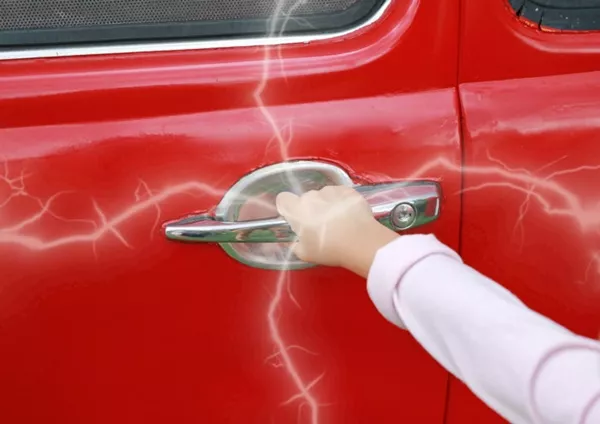
But what if your car suddenly gave you the literal shocker you never expected?
Of course not. There will always be unexpected events that can throw you off. But with proper maintenance, you are at least minimizing the chances for that to happen. But what if your car suddenly gave you the literal shocker you never expected?
What would you do? More importantly, what should you do? Why does this happen? And what can you do to prevent it from happening? Check out all the answers right in this article from Philkotse.com.
1. Zapper car
Yes, you read that right. A car can zap a person whether he’s a passenger or a driver. But there is actually more than one way that a car can do this. There are actually two ways and these events are very different from each other. The more common way which is what most people experience is by static electricity.
If you’ve experienced it before, we’re sure you already know something about it. It can happen at any time of the day when you touch any metal part in your car. Also, more common cases are reported to happen right after driving the vehicle.
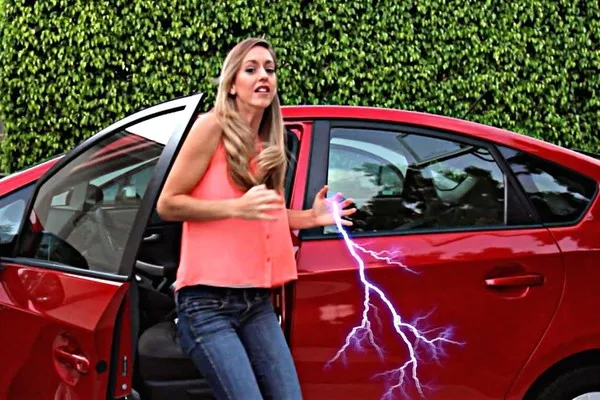
A car can zap a person whether he’s a passenger or a driver
The other less common way that you can get shocked by your car is by acting as a ground for the ignition system. This is both a very dangerous and painful experience.
Most electrical systems that exist in your vehicle aren’t dangerous or life-threatening for that matter. Most vehicles aren’t even capable of giving you a shock. That is, of course, with the exception of both hybrid and electric vehicles.
2. Automotive static shock
This may sometimes happen if you touch any of the following parts of your car:
- Car door handle
- Door panel
- Other metal surfaces
You may feel a sudden shock due to the rapid release of static electricity. This event is the same in the oldest tricks in the book you may have tried at least once. If you remember shuffling your feet on a carpet before touching someone, you’d know what we’re talking about. Another scenario is the long-gone prank of rubbing a rubber balloon on a sweater before letting it stick to something.
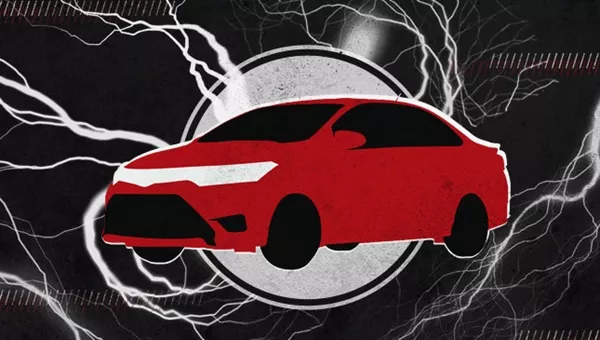
You may feel a sudden shock due to the rapid release of static electricity
>>> Read more: What happens when your car is struck by lightning?
3. What is static electricity?
“Static electricity” is generated once the electrical charge is stored in an object is released. This is the result of rubbing it against another object. When it comes to the feet-shuffling, the two elements responsible are your feet and the carpet. In the case of your car, the elements responsible for shocking you are usually your clothes and the seat. These are two elements that rub together naturally while you’re driving.

Static electricity is generated once the electrical charge is stored in an object is released
While rubbing your clothes and the seat will exchange electrons, and if they exchange the necessary amount of electrons, one side could build static electricity. When you touch your car door or handle, this will discharge. This event is more common in the dry season.
But why is that? This is because static electricity naturally discharges into the air. In the dry season, there is barely any moisture so it can’t go anywhere. You should also know that there are seat covers with a higher likelihood of generating electricity.
>>> Check out: 2 simple methods to deal with car static electricity.
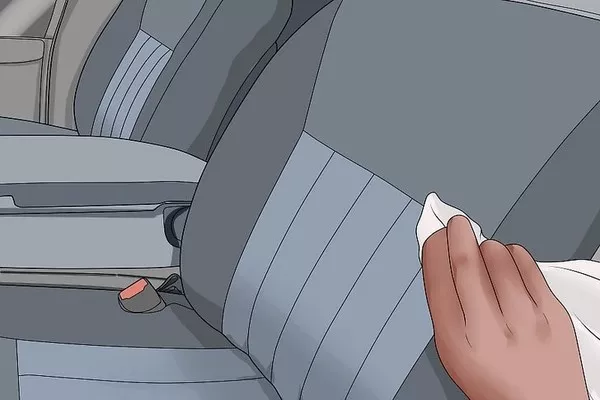
Rubbing your clothes against a seat manage will cause an electron exchange
You might think this as a funny incident that can happen to other drivers just like you. But this isn’t funny at all. Other than zapping you, the sudden surge of static electricity also poses a real threat whenever you gas up.
If you’re usually browsing the net, we’re sure you’ve come across related videos. You can find some where a car is suddenly set on fire while at a gas station. Yup, you read that right. The common reasons why those cars suddenly lit up were bad luck and static electricity.
>>> Also check: Driving under stormy weather: A driver’s must-know.
4. Prevention
Are you now scared of static shock? Well, the good news is that you don’t have to be! That’s because there are proven ways that you can prevent your car from shocking you. There are actually three ways. Two of the methods involve preventing static electricity from building up. The third method is discharging the static electricity in a safer way rather than shocking yourself with it.

Are you now scared of static shock?
Use dedicated anti-static sprays
This is one of the most effective ways you can stop your car from zapping you. You simply have to get the right product for the job. But be reminded that the product you choose should be safe for the seat cover. Leather, for example, is very sensitive to harsh substances.

Using a dedicated anti-static spray is one of the most effective ways you can stop your car from zapping you
Get a static strap
There are straps that you need to install somewhere on the undercarriage of your car. This comes in contact with the surface under your car. Some people who are aiming for car aesthetics usually don’t like this because they can look unsightly.
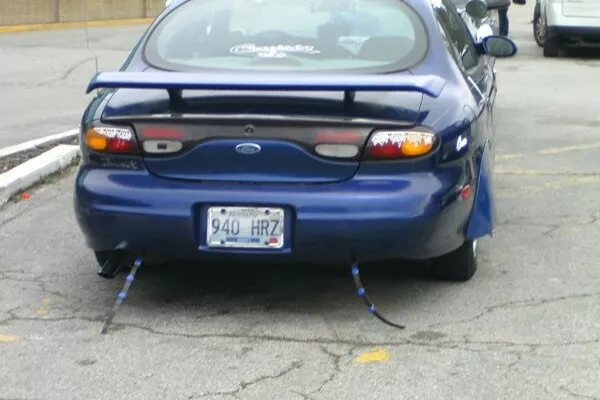
Static straps are straps that you need to install somewhere on the undercarriage of your car
The old-fashioned way
The old-fashioned way requires that you use your knuckles instead of your fingers. The knuckles and elbows can be used to close the door. These body parts are less sensitive to static shock.
Recent posts
- Safe driving: Annoying and dangerous things on the road you might face Aug 16, 2022
- 14 safety tips when you have to drive in heavy rain Aug 16, 2022
- Safe driving: Headlight tips when it comes to rainy season Aug 16, 2022
- A complete guide to safe driving in the Philippines Feb 11, 2019
- How to drive safely in heavy rain: 5 essential tips Dec 05, 2017












